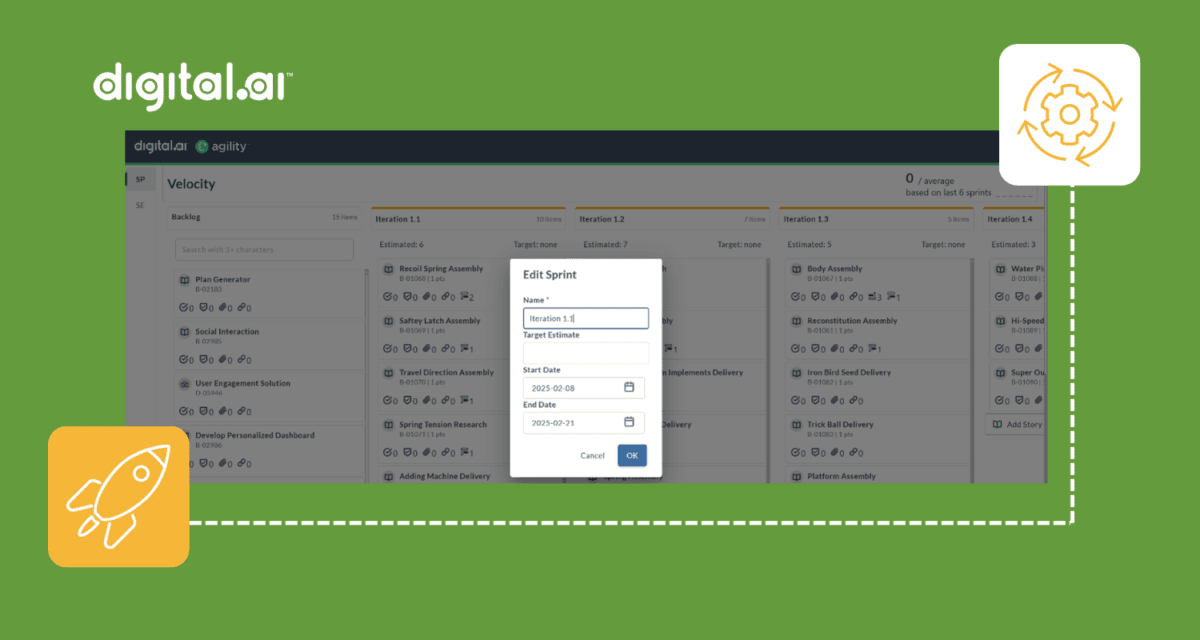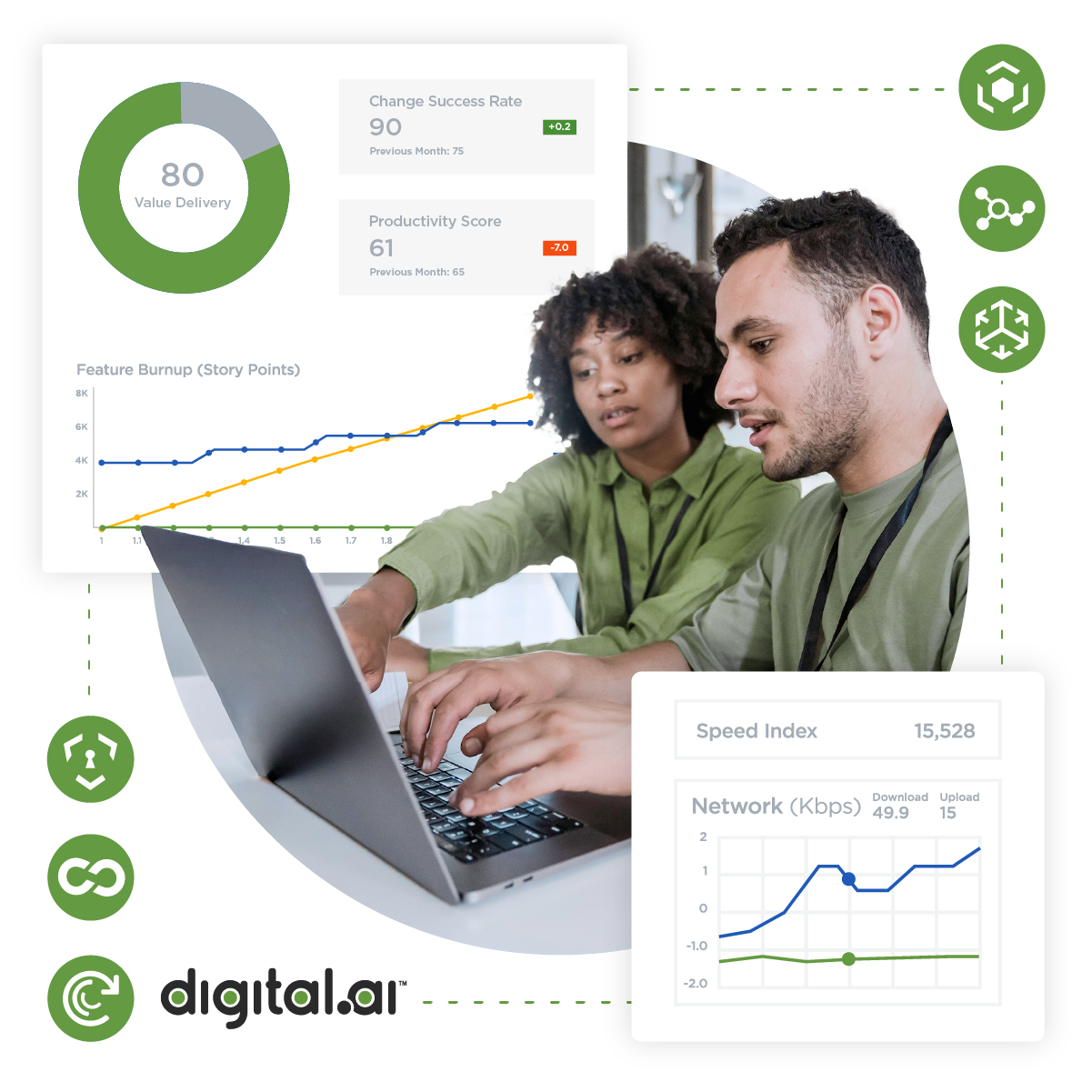Table of Contents
Related Blogs
Software development and delivery as a landscape has been transforming, fueled by the almost meteoric rise of AI-powered code generation. While it has come as a surprise to many, it was not entirely without anticipation. These tools offer significant advantages, helping streamline workflows, boost developer productivity, and potentially accelerate innovation. Critical challenges are also emerging, such as the opacity of AI-generated code. It can be difficult to distinguish it from human-written code, creating potential security and compliance risks.
The rise loosely resembles the career ark of one Gordon Sumner, who rose to prominence once he joined the Police and adopted the moniker Sting. His legacy as a disruptor in rock and pop music mimics the rapid rise of AI in development, which has disrupted traditional workflows. As his time with the Police ended, Sting faced some initial skepticism about whether or not he could continue to be a successful songwriter and performer as a solo artist. Today, we see a healthy amount of skepticism from some business leaders and developers who are hesitant to embrace AI-generated code due to concerns about its quality and reliability.
Sting sang about building a “Fortress Around Your Heart” to depict the emotional barriers people build to protect themselves from further hurt. At the same time, a robust governance framework is essential for AI-powered development. This framework will ensure the security and integrity of the code, mitigating vulnerabilities and unintended consequences.
The Fragility of Unseen Code: A Governance Chasm
The inability to easily distinguish AI-generated code from human-written code creates a significant governance gap for the following reasons:
- Limited Transparency: Traditional code reviews rely on human understanding of the code’s logic. However, AI-generated code’s inner workings are opaque, making assessing potential security vulnerabilities or unintended functionality difficult.
- Hidden Biases: AI models can inherit biases from the data on which they are trained. These biases could unknowingly creep into the generated code, leading to discriminatory or unfair outcomes. For instance, an AI trained using biased loan applications might generate code perpetuating unfair lending practices.
- Unforeseen Exploits: Threat actors could exploit vulnerabilities hidden within AI-generated code. These vulnerabilities might be unintended consequences of the AI’s learning process or backdoors left by malicious actors who trained the AI model itself.
- Compliance Challenges: Meeting industry standards and regulations becomes a hurdle. Auditing and ensuring that code adheres to specific protocols is difficult when the origin and logic behind the code are unclear. This could lead to non-compliance and potential legal or financial repercussions.
The invisibility of AI-generated code creates a governance chasm, leaving us vulnerable to security risks, biased outcomes, and difficulties adhering to established standards. As Sting’s song “Fragile” explores themes of trust, we are reminded of how fragile we are and the fragility of relying on unseen code. Robust governance will maintain trust in the system.
Building the Fortress: A Robust Governance Framework
We must construct a robust governance framework to protect code from the potential threats posed by AI-generated development. This framework should serve as a comprehensive defense system, ensuring our software’s security, reliability, and compliance.
Key components of this fortress include:
Automated Governance: The Invisible Guardians
Integrating governance checks into the development pipeline is akin to placing invisible guardians at every stage of the code’s journey. With Digital.ai, VPs of engineering and development are provided with a robust governance framework that ensures compliance and mitigates the risks associated with AI-generated code. Identifying AI-assisted code is impossible, making it essential to ensure that all code meets enterprise governance criteria.
Digital.ai’s DevSecOps platform helps orchestrate and incorporate an enterprise’s governance needs into the delivery pipeline to ensure that all software delivery consistently meets the governance criteria with automatic audit reports. Governance policies will be expressed as codes and executed as part of the delivery cycle. Additionally, the best-practice templates provided by Digital.ai capture an enterprise’s governance needs.
We also address the challenge of ensuring that all development teams adopt appropriate governance by supporting platform engineering. Platform engineering (which we will delve into in the next section) provides development teams with paved “golden” paths that capture and optimize common pipelines and workflows to reduce development effort. Digital.ai provides this self-service capability with all necessary governance included in the paved paths. This ensures compliance across all development activities.
The Power of Platform Engineering
As mentioned above, platform engineering is a strategic approach that empowers organizations to deliver software faster, more securely, and reliably. It provides self-service capabilities for developers that play a pivotal role in enforcing consistent governance.
- Empowering Consistent Governance: Platform engineering establishes a centralized control plane for software development. Standardizing processes, tools, and environments ensures that governance policies are consistently applied across all teams. This centralized approach eliminates inconsistencies and reduces the risk of human error.
- Golden Paths: The Road to Compliance: Golden paths, not to be confused with the prophecies of action of Leto II Atreides in “Children of Dune by Frank Herbert, are pre-configured pipelines that guide development teams through the software delivery lifecycle. These pipelines incorporate automated governance checks, security scans, and compliance validations. Following these predefined paths gives teams confidence that their code will meet the required standards without manual intervention. This approach streamlines development while ensuring adherence to organizational policies.
- Self-Service with Boundaries – Empowering Developers: Platform engineering promotes a self-service culture, enabling developers to provision resources and deploy applications independently. However, this freedom is carefully balanced with predefined boundaries. Offering a catalog of pre-approved components, configurations, and services ensures that developers operate within the established governance framework. This approach empowers teams to work autonomously while maintaining control over security and compliance.
Combining these elements, platform engineering creates a powerful foundation for effective governance. Sting’s song “Shape of “My Heart emphasizes understanding and adaptability; similarly, platform engineering aims to create a flexible framework that can accommodate diverse applications and teams.
Benefits of a Fortified Development Process
Fortified development processes, underpinned by robust governance frameworks that leverage AI responsibly, yield substantial advantages:
- Enhanced Security and Risk Mitigation: Fortified development processes enhance security and mitigate risks by proactively identifying vulnerabilities through automated checks and security scans. This reduces the attack surface by limiting code complexity and adhering to security best practices.
- Strengthened Compliance Adherence: Enables efficient auditability through automated checks and documentation. This proactive approach to risk management helps organizations avoid costly penalties and reputational damage, ultimately positioning them as industry leaders demonstrating a strong commitment to compliance.
- Accelerated Developer Productivity: Accelerates developer productivity through self-service empowerment. Developers access pre-approved tools, templates, and infrastructure through a self-service platform, freeing them to focus on innovation. Streamlined workflows with automated governance checks and standardized processes eliminate repetitive tasks, further increasing developer productivity.
- Fostered Trust and Transparency: Demonstrating a commitment to security, compliance, and quality builds trust with stakeholders, including customers, partners, and regulators. Implementing robust governance for AI-powered codes ensures organizations practice ethical AI development, fostering trust in the fairness, unbiasedness, and transparency of their systems.
Building Fields of Gold with Secure AI
Once familiar and predictable, the software development landscape has transformed into a fertile field ripe with opportunities for innovation. AI-powered code generation has burst onto the scene, offering to streamline workflows, boost productivity, and accelerate growth. With this newfound abundance comes the responsibility to ensure the security and integrity of AI models.
Just as Sting’s “Fields of Gold” paints a picture of a rich and bountiful landscape, we must cultivate a secure environment for AI-powered development. The invisibility of AI-generated code creates a “governance chasm,” leaving organizations vulnerable to security threats, biased outcomes, and compliance challenges. However, by building a robust governance framework, we can navigate this chasm and reap the benefits of AI without sacrificing security or trust.
This framework, or “digital fortress,” serves as a comprehensive defense system. It automates governance, scans code for vulnerabilities, and ensures compliance. Platform engineering, the architect of “golden paths,” provides standardized workflows with built-in governance checks, empowering developers while maintaining control. Best practices and pre-configured templates are blueprints for secure and compliant code, ensuring a strong foundation for success.
Ultimately, a fortified development process leads to a flourishing field of benefits. Enhanced security, streamlined compliance, and accelerated developer productivity contribute to a more efficient and reliable development cycle. Furthermore, fostering trust and transparency through ethical AI development strengthens stakeholder relationships and builds confidence in the systems we create.
As Sting reminds us in “Fragile,” even the most fertile fields require careful tending. Embracing robust governance cultivates a secure and prosperous future for AI-powered development.
If you want to discover more about harnessing the power of AI coding assistants, read our IDC analyst report “Governing AI: The Impact of AI-Assisted Development on Software Delivery and Security.” In it, you will learn how to optimize your software development lifecycle and ensure AI-generated code delivers tangible business value.
Explore the range of solutions available to help accelerate the adoption and productivity gains of AI-augmented development.
Explore
What's New In The World of Digital.ai
Digital.ai and Packaged Agile Partner to Help Enterprises and Agencies Reclaim the Value of Agile
Digital.ai and Packaged Agile: A Strategic Partnership That Reconnects Agile Delivery with Real Business & Mission Outcomes to be More Efficient & Effective
Beyond Automation: How AI is Transforming Enterprise Software Delivery
Discover how AI in software delivery is revolutionizing enterprise software by automating tasks, enhancing UX, and transforming the SDLC.
Plan, Execute, and Measure – All in One Environment: Digital.ai Agility 25.0 Feature Announcement
Discover what’s new in Digital.ai Agility 25.0 – updates to Rooms 2, OKR management, and more!





